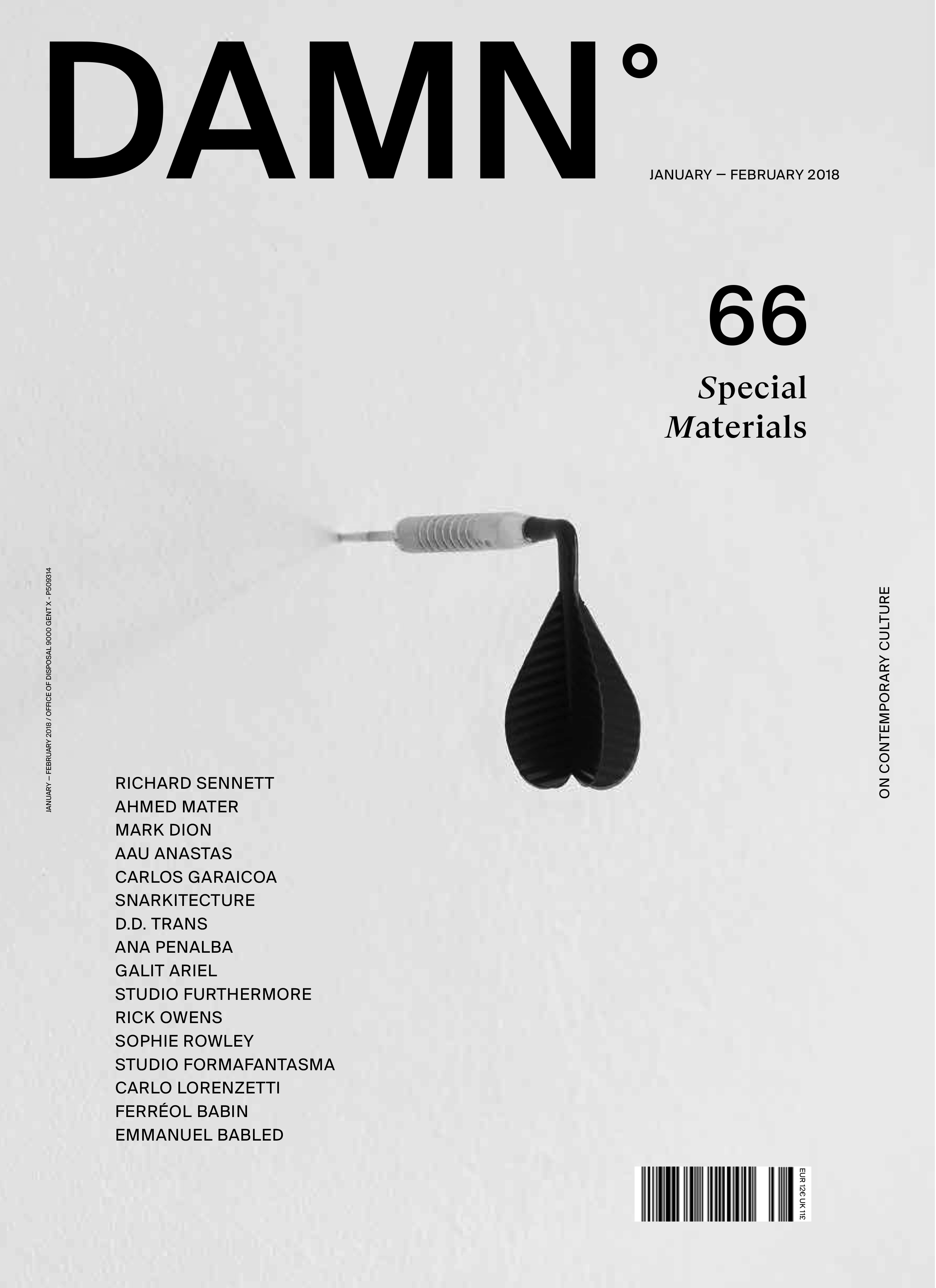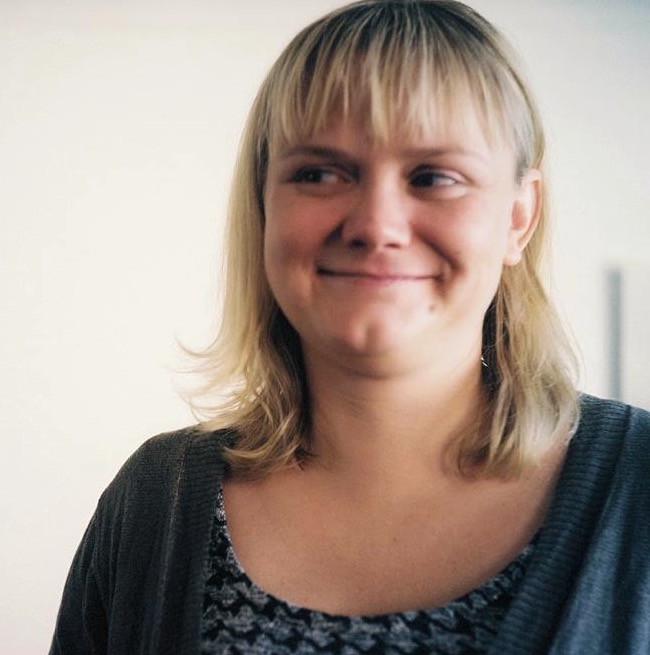Anna Penalba: When I studied architecture in Madrid at the Polytechnic School of Architecture from 2000 to 2008, two things were happening. On one hand, it was the boom in construction when a lot of architects were just thinking about building, and especially, public housing. Half of our professors were thinking that this was really architecture. The other half of architects, like Federico Soriano and Andrés Perea, were the fighters who thought the boom would be over soon, and architecture should be more than just building buildings. This was a very interesting time because besides the official curriculum, the other kind of education one receives in school is circumstance. I think this created in me and many of my colleagues a sense of feeling good in the friction of conditions, and not only finding satisfaction in a good solution but also just in the investigation. The friction also makes more people socialise and a lot of new architecture collectives started in Madrid. The collectives were networks of friends, and drawing on this resource we started doing competitions. We actually won quite a few, but always the second prize, because we were always proposing something kind of insane.
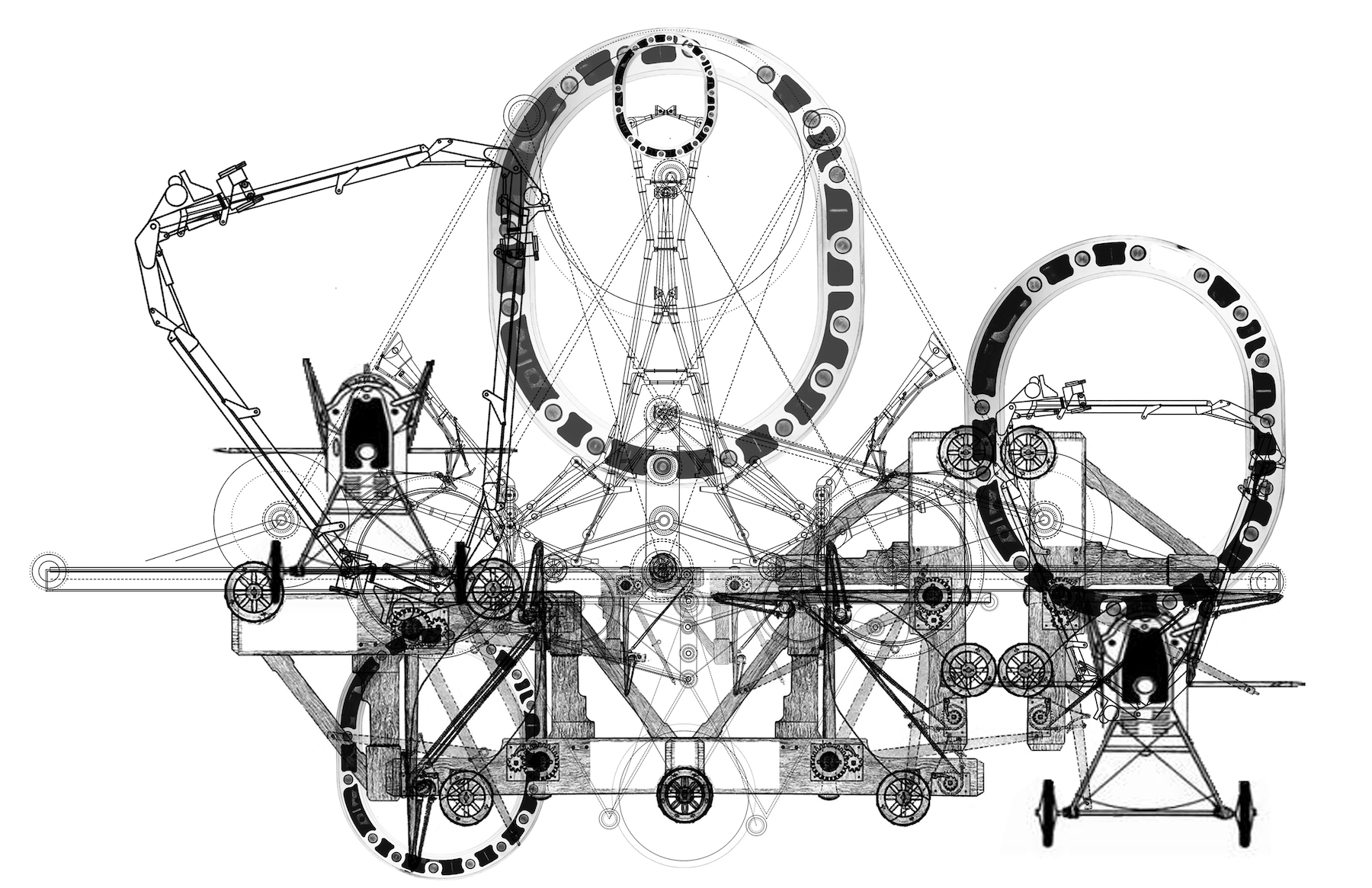
DERIVES, Architectural Representation As Graphical Debates. Contest: Personal Researching, New York, 2012-2013. This Project is made of 20 drawings of 48x72 inches and 50 drawings of 11x17.
DAMN°: Now you are in New York. Do you have an architecture pra ice or more of a conceptual pra ice, like
a paper architect? For instance, you have this great line on your website: ‘Restoring architecture to the service of the mind, the service of society, the service of thinking.’
AP: Paper architects are not different to architects who build. It’s just that they work for different times – one is working for the present and using the materials and sources of today, and the other is working for a future when we don’t need bricks to make and build. The important thing for me is that the constructions create thinking, and move our way of thinking.
AP: Yes, because often with these sorts of exhibitions they invite the same people that just defend the same principles that everybody’s defending, repeating the same conversations that are happening in every museum. In this case, they were involving a lot of young people, and also their approach was different. For instance, I had to design one of the flags for the Spanish radicals installation and they didn’t even ask me for a statement explaining my flag. In the US everything has to have a statement, and actually, it was really difficult, but this also got me thinking about why we need that and different methodologies.

RAIR, October 29th, 2016. (2) Mattresses, (2) Hemp Ropes, (2) Blue Corrugated Plastic Semi Circles, (4) Paper Towel Rolls, (1) Forklift, (1) Women Mannequin, (4) Fake Marble Veneer, (1) Ladder, (3) Bar Clamps, (2) White 12ft 2x10, Interior Structure of Sorting Line and Material Bays
DAMN°: There was a lot of debate about the lack of statements and explanations of the works in the Orléans Biennale. The curators Abdelkader Damani and Luca Galofaro defended it, saying we should give audiences more credit and that they hoped to inspire them to look things up. You’re right that it’s a different approach to our in ant gratification museum culture, and sometimes when there’s a long text next to a work, people can think it’s too complicated so not even look at the work. The result of displaying these utopian architectural visions without explanations is that they became like artworks. What is the relationship between art and architecture for you?
AP: These days I like to be an outsider – when I’m among architects I say I’m an artist, and when among artists, I say I am an architect. It’s not that I think everything is art and everything is architecture. Everything is everything. But when you’re working on a conceptual level, there is no distinction. Then for me, it becomes a question of how I can use these rules and distinctions to apply for grants. In that sense, the question of art or architecture is a strategy.

RAIR, October 01st, 2016. (2) Doors, (1) Toaster, (1) Mirror, (6) Plastic Cups, (7) Carpet Tiles, (1) Ice- cream making tray, (1) Steel Oven Tray, (1) Plastic Water Container, (1) Blue Bookcase, (8) Laundry Baskets, (1) White 12ft 2x10, (1) White PVC Pipe, (1) Wood 2x4, (1) Vacuum, (2) Mattresses, (1) Forklift, (1) Backboard and Hoop, (1) TV
DAMN°: Let’s come back to the 10 flags designed by Spanish architects and installed in the Rue Jeanne d’Arc, which runs from the Cathédrale Sainte-Croix d’Orléans to the Joan of Arc Museum. You showed a composite image from [Re]productions, a project you completed at the Recycling Artists in Residency in Philadelphia in 2016. How does the project relate to your philosophy of anti-architecture?
AP: In Philadelphia, I had an album of 200 different buildings and then every day I was there, I tried to reconstruct one using whatever waste was in the city on that day. Using waste relates to two of my anti-architecture principles. The first is not to design the final project, because then you just make a list of materials, go buy them, and then make your super design. For me, architecture is not about envisioning what you want to build, but to use whatever is available and see what is possible. You never know what’s going to be at the end, and even in the middle of that process, new things get added, and everything gets completely modified again. In this kind of consultative system, the architect doesn’t have the power or control, which I think will freak many architects out!
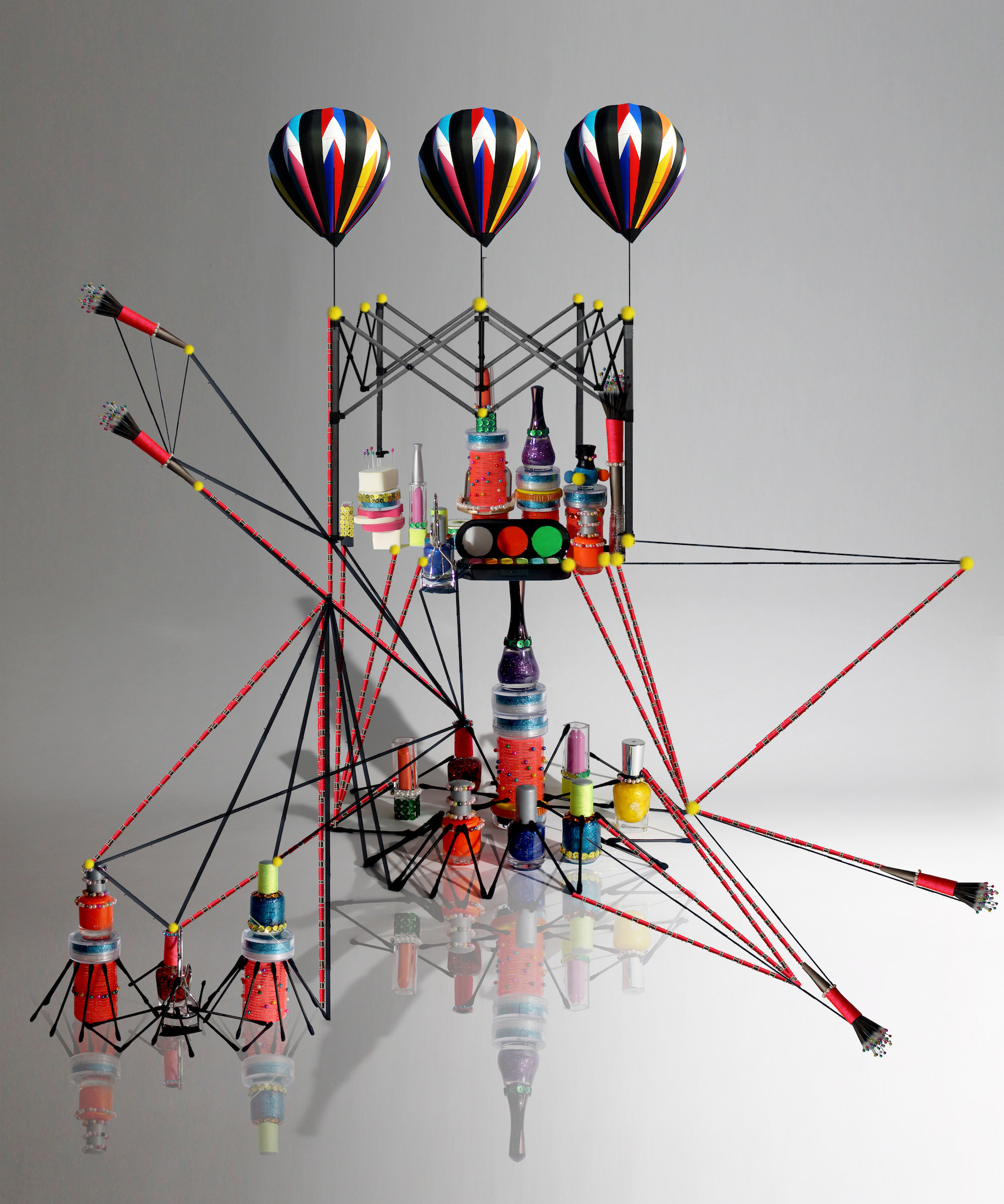
THE HIDDEN MOMENT OF MAKING UP! Urban prototype: beauty-meter. The un-identifiables: make up instruments part of: SCENARIUMS. Summer residency research project at Morgan, New York. Duration: 2 months (June/July 2015), ongoing. Building structural possibilities from objects that belong to the collective memory of our daily scenes
DAMN°: What is the second principle of anti-architecture then?
AP: Even if we don’t know how our things are made anymore, what is actually more important is what happens to waste and how it disappears. The second principle then is that the deconstruction process is as important as the construction. I always record videos of how we unbuild the installations. It’s not that I would only use waste as a construction material, but I would not use concrete and bricks because the deconstruction is much harder. For instance, I still use the crane, and this I see as a viable construction material not a gimmick. In this era’s conditions of impermanence, with its constant exchange and overnight redundancy, it’s essential to design the deconstruction too, and I just don’t think there’s often the reason for permanent architecture anymore. The question of how we are going to erase architecture in our completely packed cities, and the architect’s role in this, is becoming more and more pressing. This is very difficult for architects – to think about how to make their amazing building disappear again.
DAMN°: This is then where your other project, Scenariums, included at the FRAC Centre exhibition of the Orléans Biennale picks up. It explores memory as an instrument of culture. What is the relationship between memory and architecture?
AP: The problem for me is that architecture plays an essential role in building our memories. In the sense of architecture not only being about buildings or the physical, it also represents our ways of thinking conceptually, and can also hold us back mentally if it doesn’t change. In Scenariums and other work of mine, I try to use ordinary things from our everyday environment that we don’t see anymore and invite people to re-engage and re-question them. So how can architecture be used to also manipulate memories and encourage us to think about things? Kind of like what good art does too.
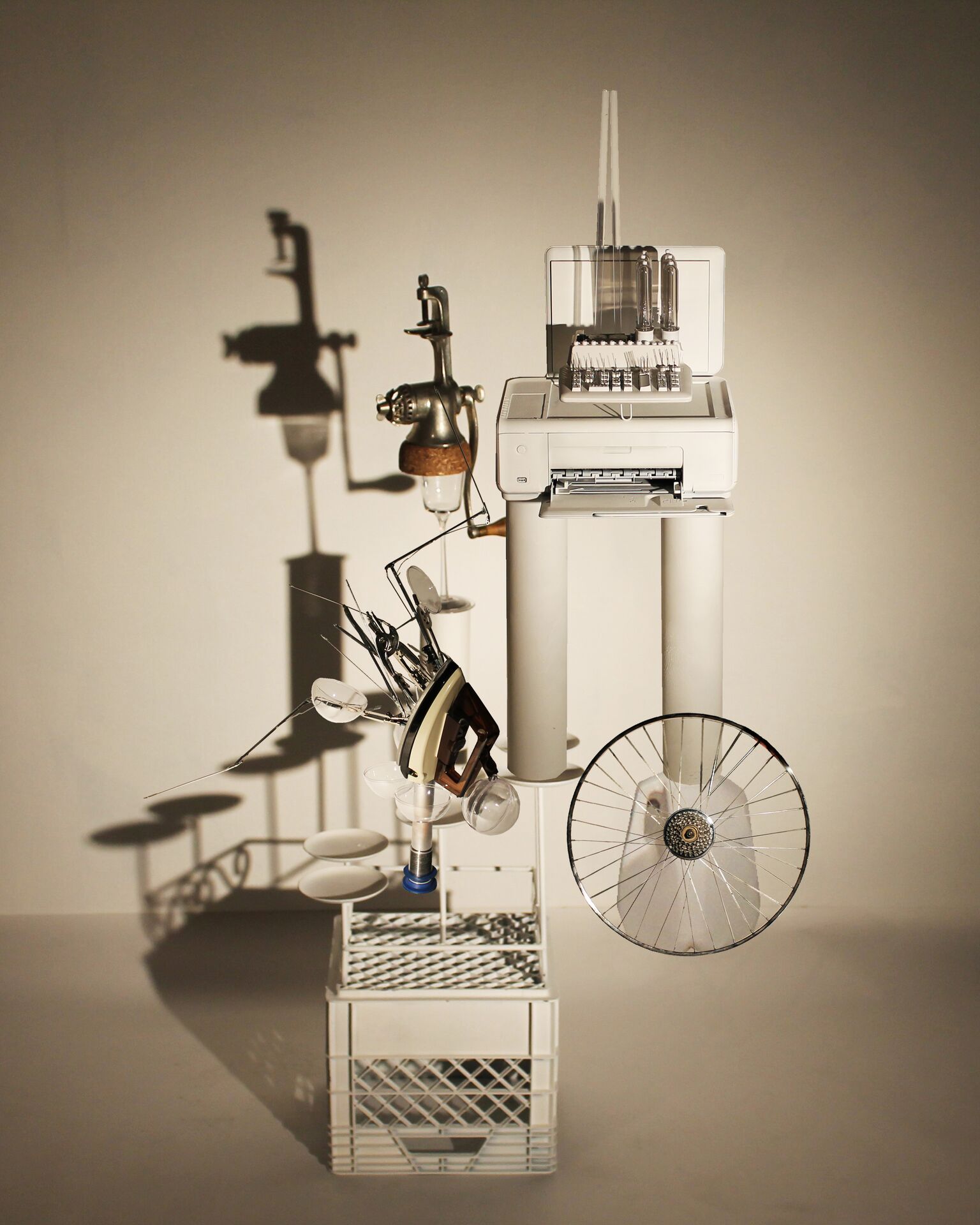
SCENES. Spatial agreements. A distorsion in the collective memories. De-compositions. Not interested in the design but in the system that makes the design possible Granted with the Platteforum art residency in Denver, Colorado by Fall 2013
DAMN°: In both your philosophy and aesthetics, there is a striking similarity to Marcel Duchamp and the Dada Movement. Is this intentional?
AP: Oh, I love Marcel Duchamp so much, and I actually just read a book of his. But I don’t think I’m really influenced by anything, as I’m not really a fan of any specific architect or artist or musician or person. It’s true, I do love Duchamp, but I was never directly influenced by him.
DAMN°: Are you sure? Duchamp also had a lifelong fascination with the difference between the imagined work and what can be realised. The whole philosophy of readymades also has a lot of parallels with anti-architecture: invite relooking at the ordinary in a different context; the outcome is not predetermined but shaped by what is found; and it challenged the very nature of the discipline, art, as only being pretty but also conceptual.
AP: For me, the main difference is that I don’t see my work as stopping on the conceptual level – the cranes and bulldozers are viable building propositions, not just fictions. But what you say is all true, and maybe he has influenced me more than I realise. You know my brain doesn’t always remember where it gets its ideas and inspiration from.
DAMN°: Like the appropriation of the readymade! What about the Memphis movement and Ettore Sottsass? Surely you can’t deny their influence on your work?
AP: Who is Memphis?
#1 Orléans Architecture Biennale, various locations throughout the city and region, until 1 April 2018


